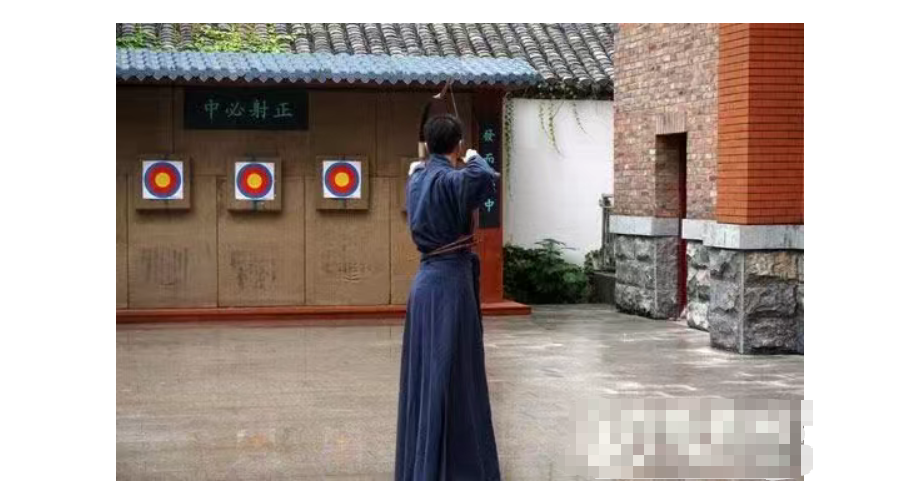
IV. The Archer's Mental Will
The archer's practice of archery should be a "civilized shooting" that combines both civil and military skills, enhancing moral cultivation while strengthening the body. Through standardized archery movements, one achieves harmony between body and mind, cultivating the habit of unifying body, mind, and will, ultimately achieving the archer's goal of "cultivating oneself, managing the family, governing the country, and pacifying the world."
In archery, posture should be upright, force should be applied gently, aiming should be resolute and steady, and release and release should be calm and composed. Mentally, one should be calm, patient, obedient, agile, and courageous, and then guided by rules and coordinated as the initial steps to moral cultivation. Mentally, attention should be paid to observation, precision, imagination, memory, planning, and reflection, forming the foundation for intellectual development. A correct and natural posture maintains the body's proper state and corrects abnormalities. Gentle force allows all parts of the body to develop in unison, reducing the risk of extremes.
How can one achieve a correct archery posture? Because archery is practiced standing, if you use the large stance, you stand with your legs straight and feet apart. If you use the small stance, you squat with your waist and hips slightly similar to a horseback stance. Keep your head straight and looking forward, turning to the left when aiming. Remember not to lean forward. Keep your mouth and chin raised. This correct posture is neutral and free of pressure or restriction on internal organs, meeting physiological requirements.
Image
Why should we talk about peaceful force application? When drawing a bow and arrow, use gentle and gentle force with your hands and arms. Draw the bow at full draw, avoiding hasty movements. Keep your feet steady on the ground, and especially your waist, legs, chest, and head straight and steady. Avoid stiffness. Keep your entire body's force points evenly coordinated and unified, focusing your energy and strength firmly before releasing it. Once you release, you'll be sure to hit the target. If you draw the bow hastily and release the arrow hastily during archery, your force will be unnatural, and your muscles and bones will be more susceptible to injury. Even if you occasionally hit the target, it will be by chance. Therefore, avoid scrambling during archery, as scrambling will lead to excessive force and a loss of balance. Avoid rushing to shoot, as this will cause you to be hesitant and flustered.
How can one achieve mental composure, patience, compliance, agility, and courage? Because archery requires composure and fortitude, based on a righteous heart and the cultivation of qi. A calm and composed attitude is essential, supported by patience and courage. This is what the ancients called "no emotion, no expression, harmony of the limbs, regulation of the breath, and unity of mind." Aim with composure and stability. Be patient before releasing. After drawing the string, allow the arrow to remain straight, avoiding concentrating force and bending it. Release with agility and courage, releasing immediately without hesitation. Lack of composure leads to panic, difficulty in aiming, and an uneven arrow. Lack of patience and compliance leads to hasty release, resulting in inadequate and inadequate aiming. Precision is sufficient. In this crucial moment, one should be agile, brave, and decisive. Then the arrow will be released smoothly, smoothly, and swiftly, without any delay or delay.
Why is it so important to pay attention, observe, be precise, imagine, remember, plan, and think? Before shooting, one should pay attention to the bow's tilt, the arrow's curvature, the wind direction, the weather, the layout of the quiver, and the position of the visitors. After grasping the bow, one should observe the distance from the handle, the position at the time of shooting, the coordination between the bow and arrow, the wind direction and strength. When setting the bow, one should carefully calculate where the nock should rest on the bowstring, whether it should be above or below, and have a precise plan for the timing. Before releasing an arrow, one should first imagine the arrow, planning to hit a specific point on the handle. Then, based on this imagination, one should shoot forward, adjusting the aiming point of the second arrow according to the landing point of the first arrow, thus quickly calculating and shooting in sequence.
